Report Identifies Teacher Preparedness and Retention as Predictors for Student Achievement in Odds-Beating Schools
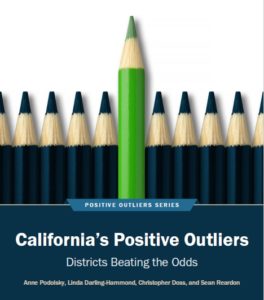
A report released earlier this year by the Learning Policy Institute (LPI), California’s Positive Outliers: Districts Beating the Odds, examined school districts in California to identify those that were “positive outliers”. These are schools that demonstrate the ability to support students from diverse ethnic, racial, and socio-economic backgrounds in “beating the odds” by achieving better than expected academic outcomes when compared to students from across the state with similar backgrounds.
Conclusions in the report found that after controlling for socioeconomic status of students’ families and district characteristics, the level of a teacher’s qualifications was the most important school-related predictor of student achievement. This finding has major implications for recruiting and retaining staff, as well as employing teaching and learning strategies that support the success of students from diverse backgrounds.
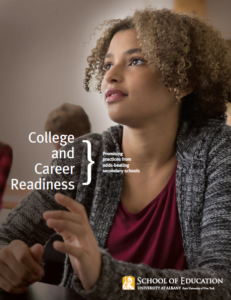
While the LPI study was occurring on the west coast, NYKids was conducting its own Career and College Readiness (CCR) study of odds-beating high schools in New York State. Like in the LPI study, NYKids identified odds-beaters using similar criteria (student demographics and achievement). Along with conclusions from the LPI report, findings from the NYKids’ CCR study offer insights into the importance of teacher quality and qualifications in supporting diverse student achievement and advancing teacher effectiveness and retention.
Teacher Retention and Teacher Preparedness
According to the LPI report, fully prepared, qualified teachers were identified as those who had completed formal teacher preparation programs and had earned state certification. In schools where teachers were fully prepared, students demonstrated higher than predicted levels of achievement relative to the socioeconomic conditions in their communities, and teachers were 2 to 3 times less likely to leave the profession. In contrast, lower student achievement and lower rates of teacher retention were more likely in schools with larger proportions of underprepared teachers (i.e. those working with emergency permits, waivers, or intern credentials). This was especially true when underprepared teachers were disproportionately assigned to schools that serve the largest populations of students of color and those from low income families.
While these findings indicated that underprepared teachers were more likely to leave the profession, the study also found that the presence of large concentrations of underprepared teachers signals the influence of broader issues in teaching and learning conditions in schools, such as the struggle to retain strong principals and provide sufficient teaching resources. These conditions may affect teacher retention as well as teacher quality.
The NYKids’ CCR study revealed educators’ consideration of the impact of teacher quality and teacher support on retention and student achievement and provides insight into promising strategies.
Recruitment and Retention Practices at NYS Odd-Beating Schools

Despite the prevalence of challenges with recruitment and retention of highly qualified staff that are typically faced by rural schools, Shelburne-Earlville Central School District, a rural school district in NY’s Southern Tier, continues to attract and retain highly-qualified candidates. Teachers report being connected to each other and district strategies for student support include distributing leadership among a competent staff. In this context, teacher qualifications are a vital and valued part of developing a school culture that advances teacher effectiveness and engagement in service to improving student achievement.
“The staff and the students have certainly been what have kept me here for sure,” said a Sherburne-Earlville Senior High School teacher. In describing the school climate, numerous district and school leaders, teachers, and staff used the word “family.” “I don’t know how you label it any other way,” said one school leader.
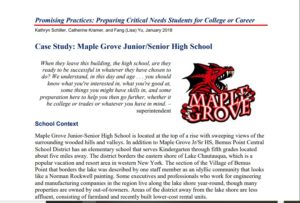
Similarly, teachers at Maple Grove Junior-Senior High School identified the positive culture and climate in their school and district as being purposively created by district leaders through the recruitment and integration of talented people into the district as a whole. Hiring practices require candidates to have appropriate qualifications and certifications, along with qualities of adaptability and interpersonal skills, in consideration of meeting the changing needs of the school and students.
As a district leader noted, “We’ve got to make sure that everyone is connected. Somehow, they want to stay here. So, we build our foundation and we build our family; we build our teaching community in the community…It’s not just about the school.”
Teachers Readiness to Meet the Needs of Diverse Learners
As noted in the LPI report, “Success in the 21st century does not depend solely on what people know, but also on what they can do with what they know to solve complex problems and continue to learn independently throughout their lives.” Preparing students for success in this way requires that teachers are themselves fully prepared to provide deeper learning experiences which support students in specialized ways to apply challenging academic content to real-world problems and in contexts that engage them in communication, collaboration, and critical thinking.
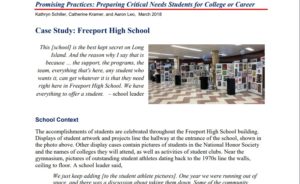
At Freeport High School in Long Island, NY, district leaders reported actively hiring staff members who are best suited to support their large Spanish-speaking and immigrant student population. New teachers are expected to possess either the state’s English as a New Language (ENL) extension to their teaching credential or a bilingual certification. In addition, the school features a diverse academic program aligned with student interests and offers a wide variety of social-emotional and social services that can be tailored to varying needs. These specialized supports enable teachers to co-construct a humanizing school community that fosters student achievement by intentionally drawing upon their skills and knowledge as qualified educators.
“And then [newly arrived immigrant youth] are thrust into a new high school with a new language and are expected to perform academically,” said a district leader, “…unless we, as an institution, understand that we have to service the whole child and not just make sure they pass a test and graduate, we’re not going to find continued success.”
Opportunities to Learn More About Odds-Beaters in California and New York

As a companion to the report released earlier this year, LPI will be releasing a new report on September 10 that highlights promising practices in some of California’s odds-beating schools. Check here to learn more.
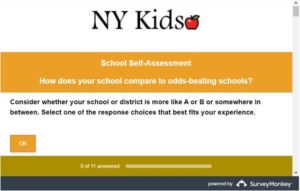
The NYKids website features a host of resources such as case studies and reports highlighting lessons learned from odds-beating schools in New York State, a new sample survey tool to see how your school compares to others, and COMPASS, a unique direct support opportunity that guides district & school teams to use continuous school improvement processes and tools. To learn more, visit: https://ny-kids.org/.
